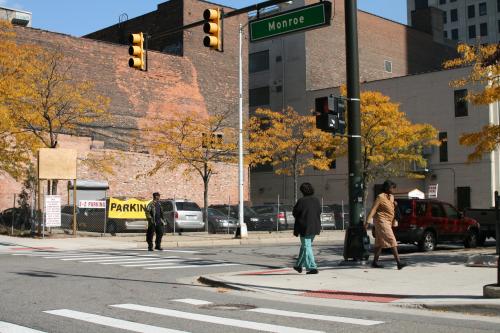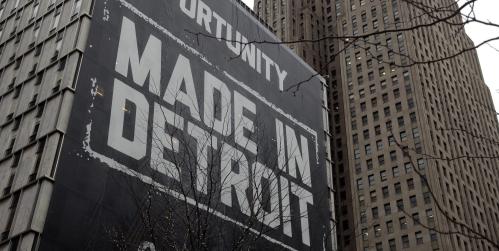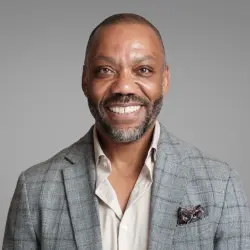This story was produced by The Hechinger Report, a nonprofit, independent news organization focused on inequality and innovation in education. Read more about education in New Orleans.
We need to memorialize more statues of trailblazers such as physician Vivian Pinn
“I still remember my first trip to UVA, to the hospital, was in the ’50s,” the renowned physician Vivian Pinn recounted to board directors of the National Medical Association and me in a noisy D.C. restaurant in October. “I was there because my grandfather was on the segregated ward in the old hospital.”
I leaned across the table, eager to make sure I caught every nugget of wisdom Pinn dispensed. She was the only woman and person of color to graduate from her University of Virginia Medical School class of 1967, and most notably, went on to become the director of the Office of Research on Women’s Health at the National Institutes of Health, a position she retired from in 2011.
“And to then think,” Pinn continued, “that more than 50 years later I’d come back here [Charlottesville] to see a major building with my name on it is pretty amazing.”
On September 13, 2017, UVA renamed the medical education and research building formerly known as Jordan Hall as Pinn Hall. (Schedule conflicts delayed an originally planned 2016 dedication.) Amazing indeed, given the past and present context of race relations in Charlottesville. Just one month earlier, torch-toting racists, Klansmen and Confederate sympathizers had marched on the University of Virginia’s campus in Charlottesville during a deadly weekend of protests around the removal of a Confederate monument. Three people died before that rally ended.
Confederate monuments are a myopic aggrandizement of a warped historical narrative — a storyline that rationalizes past and present oppression
The built environment is so much more than shelter, urban planning and architecture — it reflects our very commitment to democracy. Our statues are monuments of the state of our democracy as much as they honor our beloved. Our willingness to take down racist traitors also signifies. To be clear, Confederate monuments are a myopic aggrandizement of a warped historical narrative — a storyline that rationalizes past and present oppression. White House Chief of Staff John Kelly, a retired Marine Corps general no less, perpetuated the Confederate fable in an interview last week by saying that Robert E. Lee, the traitor who fought against the union and whose statue was at the center of the protest in Charlottesville, was an “honorable man” and the Civil War was brought about by a “lack of an ability to compromise.”
UVA has come a long way in honoring Pinn, but the calamities that transpired a month earlier in Charlottesville show how much farther our democracy has to go.
“I hope the image of my name on a building is not seen as a representation of my personal accomplishment,” said Pinn. “I hope it represents inspiration for black women who face similar battles today to what I dealt with in the past.” She knows that her success, while important, cannot substitute for social change that goes beyond individual acceptance and assimilation.
 Vivian W. Pinn, M.D., Senior Scientist Emerita NIH, speaks at the dedication ceremony of a building renamed Pinn Hall in her honor at the University of Virginia School of Medicine in Charlottesville, VA. Photo credit: Welford Jones
Vivian W. Pinn, M.D., Senior Scientist Emerita NIH, speaks at the dedication ceremony of a building renamed Pinn Hall in her honor at the University of Virginia School of Medicine in Charlottesville, VA. Photo credit: Welford Jones
As a black woman, Pinn navigated a white, male-dominated field to serve her country by literally healing victims of physical and social ailments at NIH. It’s more than a notion to think racism and sexism kill more people than diabetes. Middle-class, educated black women exhibit worse health outcomes than their white peers. Black women can’t educate or buy their way to better health outcomes because racism and sexism are like airborne pollutants, affecting everyone who comes into contact with them. We have to change the social, political and, yes, the built environment that reflects our world, to improve conditions.
 On Sept. 13, 2017, the University of Virginia renamed the medical education and research building formerly known as Jordan Hall as Pinn Hall, after renowned black physician Vivian W. Pinn, Senior Scientist Emerita NIH. Photo credit: Welford Jones
On Sept. 13, 2017, the University of Virginia renamed the medical education and research building formerly known as Jordan Hall as Pinn Hall, after renowned black physician Vivian W. Pinn, Senior Scientist Emerita NIH. Photo credit: Welford Jones
UVA, a public university, rightly paid gratitude to Pinn and democracy by naming a building after an authentic hero. Pinn trained hundreds of physicians in her academic appointments at Howard University College of Medicine, Harvard Medical School and Tufts University. As a director at NIH, she mentored researchers and advanced policies that would improve outcomes for women. As past president of the National Medical Association, a non-profit professional organization representing black doctors and their patients, she projected the voice of disenfranchised communities. It’s hard to imagine how much worse off women would be without Pinn’s life’s work, which gets us closer to a more perfect union. We need that UVA hall to bear Pinn’s name, to remind us of the values we should honor and celebrate.
The fight around monuments is an extension of blacks’ perpetual struggle with claiming space — our existential battle for control and representation
The fight around monuments is an extension of blacks’ perpetual struggle with claiming space — our existential battle for control and representation. From our resistance against highways being built on top of black communities to shuttle whites into suburbs to whites gentrifying formerly red-lined districts, the fight to claim space and democracy goes well beyond which monuments are taken down.
Take ‘Em Down NOLA, a group instrumental in the removal of four Confederate monuments in New Orleans, also demands the City of New Orleans “develop a community driven process for the removal of the monuments and the choosing of their replacements,” according to the organization’s website.
Facing death threats and other acts of intimidation, such activists should be considered modern-day heroes worthy of more than a page in the history books. It’s past time we made room in public spaces for people who actually deserve our respect. The removal of Confederate monuments from public spaces isn’t about erasing history; it’s about honoring the people who make it.
The Brookings Institution is committed to quality, independence, and impact.
We are supported by a diverse array of funders. In line with our values and policies, each Brookings publication represents the sole views of its author(s).







Commentary
Removing racist monuments is about making history, not erasing it
November 9, 2017